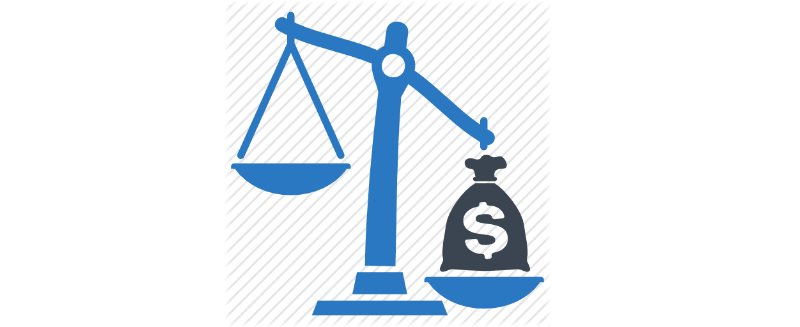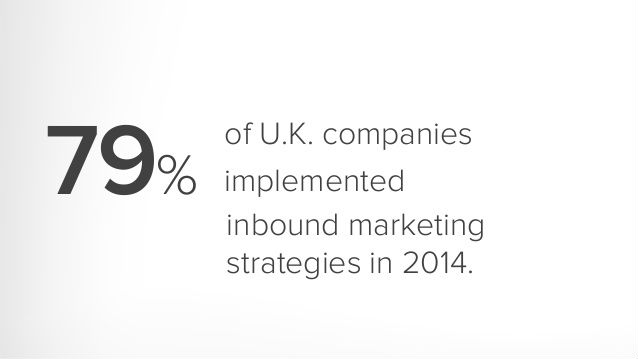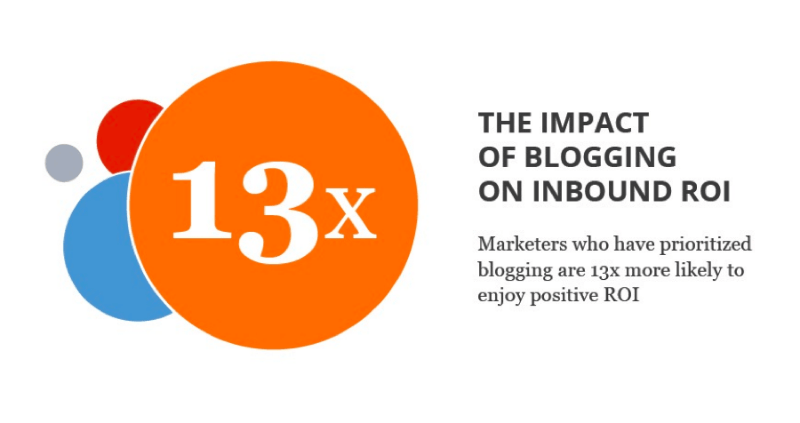
I was reading a post by Pawan Deshpande of Curata.com about metrics for Inbound Marketing and I started thinking about where Customer Acquisition Cost fits in with an Inbound Marketing strategy. Inbound Marketing has to be profitable, right? But how do you know? I mean, how do you measure the actual ROI of your Inbound Marketing efforts?
Specifically I'm talking here about online Software-as-a-service (SaaS) companies that use Inbound Marketing as a channel to create leads, and revenue paying customers.
A big thank you to Lincoln Murphy of Sixteen Ventures for feedback and editorial review.
Everyone's doing Inbound Marketing
These days everyone seems to be doing inbound marketing. In fact, according to Hubspot 79% of UK businesses are using Inbound Marketing. As the pioneer of Inbound Marketing, Hubspot is a great example of a SaaS business that has built their business by profitably acquiring paying customers via Inbound Marketing.

And, according to the latest State of Inbound annual report from Hubspot, marketers who blog are 13x more likely to enjoy positive ROI.

But, it turns out around half of us marketers don't actually bother to measure ROI. Scary, huh? But, the thing is, without measurement there's no way you can know what's working (or not) - so you can learn, adjust, and improve your marketing ROI.

So then, back to my original question... "do you know how much it costs to acquire one new paying customer in your business via Inbound Marketing??" I'm not talking cost to generate "one Lead", I'm talking cost to generate "one signed up revenue generating customer".
How to Calculate Customer Acquisition Cost for Inbound Marketing:
Let's start by agreeing on a quick definition. For the purpose of this article, let's define Customer Acquisition Cost (CAC): as the cost to acquire ONE paying customer (not a "lead", not a "free trial signup", but an actual revenue generating "money-in-the-bank" customer).
Now, there are two ways to calculate acquisition costs:
1. TRADITIONAL - COST PER LEAD: Cost per lead is the traditional way to look at Marketing ROI. It considers the end result to be "a Lead". Which the sales team will then need to qualify and convert to a paying customer.
2. REVENUE CENTRIC - COST PER CUSTOMER: Cost per paying customers is a deeper, revenue focused, bottom line approach to look at Marketing ROI. It considers the end result to be "a Paying Customer".
Let's walk through a simple example..
Let's say that it costs you $2000 to create and promote four blog posts in a month. And say during the following (let's say month), those posts generate the following results:
- 400 Signups to your newsletter (future leads)
- 80 Free Trial Signups (strong leads)
- 24 Convert to become Paying Customers
Total: 480 Leads (400 + 80)
Total: 24 Paying Customers
The Traditional Method - Cost "Per Lead"
Lots of businesses look at Cost per Lead. This is straightforward to measure - given you know what you spent $2000, and you know how many leads you acquired.
Formula: Calc the total cost of your inbound marketing over a period of time and divide by the number of leads acquired over that same time period.
CAC (per Lead) = $TOTAL (inbound costs) / Num **Leads** Acquired
i.e. CAC = INBOUND COST($) / Num Leads
i.e. CAC = $2000 / 480 = $4.16
By the way, according to Hubspot, leads generated via inbound marketing cost on average 61% less than those generated by outbound strategies.
The Revenue Centric Method - Cost "Per Paying Customer"
We don't want just the cost of Leads. We want Paying Customers. That's further down the conversion pipeline. And we've acquired 24 paying customers.
Formula: Again, lets keep it simple: Calc the total cost of your inbound marketing over a period of time and divide by the number of "paying customers" acquired over that same time period.
CAC (per Paying Customer) = $TOTAL (inbound costs) / Num Paying Customers Acquired
i.e. CAC = INBOUND COST($) / Num Customers
i.e. CAC = $2000 / 24 = $83
In practice, you'll likely have additional costs of onboarding and selling to your Trial Users until they become Paying Customers. Let's say on average you spend a further $10 per Trial User to get them converted. Your CAC now looks like this:
i.e. CAC = INBOUND COST($) / Num Customers + Extra Costs
i.e. CAC = $83 + $10 = $93
OK. $93 that's the magic number. Remember that. Write it down beside you. That's what we're paying to win one paying customer. We're going to come back to that, because, there's one more question, and that is: "If you pay $93 to acquire one new paying customer - can you build a profitable business using Inbound Marketing as a Channel?" And for that we need to look at something called "Customer Lifetime Value".
BONUS: I'm including a reference here to a great article by Carlos Espinal if you want to dig deeper into these often hidden costs of customer acquisition.
Customer Lifetime Value vs Customer Acquisition Cost
It all comes down to one thing: Customer Lifetime Value. And here's why... it's important is that you make a profit, right? So that means, its important your customers pay you MORE than you paid to get that customer.
Lifetime value represents the fact that a customer may purchase more than once. And a customer who makes repeat purchases is more valuable, because given we've already acquired that customer, subsequent purchases have zero acquisition cost. Or put another way, if you pay $100 to get a customer, you'll want to sell them as much as you can, today, tomorrow, next month and next year. (This is why SaaS businesses love monthly subscriptions.)
How To Calculate Customer Lifetime Value?
CUSTOMER LIFETIME VALUE (LTV): Customer Lifetime Value (LTV) is the net revenue your customer generates, over time. In other words, LTV is the total revenue received from all purchases by a customer, less the total costs to service that customer.
Formula: LTV = (gross revenue - cost to service the customer) X number of purchases
For Monthly Subscription SaaS businesses, the number of transactions is typically the number months as a paying customer.
Example: Say your SaaS business charges $34 per month on a recurring monthly subcription. It costs you $5 per month to service that customer in terms of server or data costs. And lets assume your customer typically stays for 12 months.
Then LTV = ($34 - $5) * 12 months
i.e. LTV = $408 - $60 = $348
NOTE: Companies typically calculate Customer Lifetime Value (LTV) over a period of 1-3 years. It can depend on the type of business. If you are a Startup, you may not have enough data yet, so you'll need to make some assumptons, but I would be cautious about using anything over a year.
NOTE on Churn: I've ignored the concept of Churn. Not all customers will stick around for a year, but for our purpose here we're going to ignore this an dwork to an "average lifetime". If you're interested, here's a thought provoking article on acceptable churn rates for SaaS businesses.
Putting it all together: How to make sense of your CAC and LTV?
Remember, in our previous example, we calculated a CAC of $93 ? Ok, so now we can look at what we're spending to acquire a customer, and compare with our LTV to get a sense if this is a reasonable Customer Acquisition Cost, and if our inbound marketing is a valuable channel.

Think of a rocket. If you put a bigger engine, maybe you'll take off faster? (That's increasing your LTV.) Now, what if you design the rocket so its lighter, again it should go faster? (That's decreasing your CAC.) You can think about your CAC and LTV, in terms of how well they are working for you, or how efficient they are.
CAC Efficiency and Payback Period
Ultimately its important to look at the efficiency of your CAC. Let me leave you with one thought, and that is "how fast you recoup your CAC from your customer?" This is know as "Payback Period". Your CAC needs to be efficient and your payback period short) According to Lincoln Murphy, "Super-efficient companies with self-service, low-price offerings (and lead by marketers, not engineers typically) have a payback period of < 1 month."
Back our example, remember we're making $29/month. And we pay $93 CAC. So, if we calculate our Payback Period as follows:
Payback Period = CAC / Monthly Net Revenue
i.e. $93 / $29 we see our our Payback Period is 4 months.
So, if you can get your Payback Period under 4 months you're doing well. If the most efficient self-service low-price SaaS companies can have a Payback Period of just one month, that's something to aim for right?
BONUS: CAC and LTV for Startup Funding: If you are looking at funding your SaaS Startup, check out Christoph Janz overview into an investor view on CAC and LTV and what that says about your startup.
Conclusion: What should you do next?
Inbound Marketing generates leads, for sure. But don't stop at Lead Generation. Go deeper, and focus on creation of actual paying customers. Fully account for your costs and revenvues from this channel. And make sure you have an efficient customer acquisition channel.
Next, you should start putting the metrics in place so you can measure, track and improve your Inbound Channel.
Was this post helpful? How do you measure CAC for your Inbound Marketing efforts? Please let me know your thoughts in the comments section below.
Note: Some images courtesy of HubSpot's 6th Annual Report .
 Popcorn Metrics
Popcorn Metrics